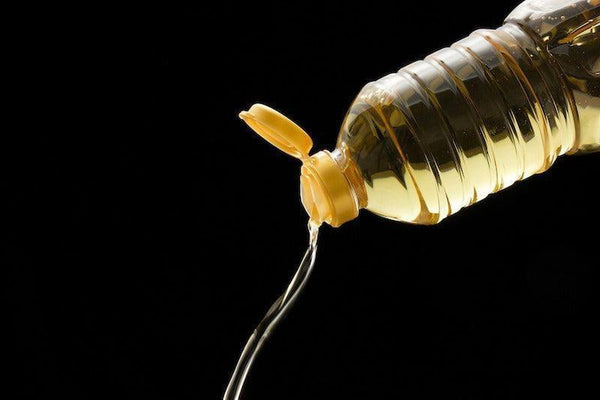
Jump to:
Cooking sake and mirin are two of the most common Japanese pantry staples. If you’ve tried Japanese food or are familiar with Japanese flavors, then you would have definitely come upon these ingredients at least once. Combined, sake and mirin provide Japanese dishes with a light sweetness and umami flavor that cannot be found in other umami-rich seasonings like soy sauce.
While sake and mirin may sound similar because they are both technically rice wines, they are in fact two separate ingredients serving different purposes. Not to mention, they also have different flavors. In this article, we’ll cover the basics of what sake and mirin are, how to cook with them, their differences, and more. Stay tuned to learn everything you need to know about these two household Japanese seasonings.
(Cooking) Sake

When most people hear sake, they probably think of the alcoholic rice wine made for drinking. Cooking sake, or 料理酒 (ryorishu) is a light colored rice wine made for the intention of yes, cooking. You can think of it as a Japanese type of cooking wine. Usually cooking sake found in the supermarket contains rice, water, and added salt, but there are also varieties that contain brewer's alcohol or leave out the salt. Cooking sake is cheap and provides dishes with a unique umami flavor.
Maybe you’re wondering, can I drink cooking sake? Due to the added salt content in most varieties, you should not consume cooking sake. It was not made for the purpose of drinking as it is typically not made with very high quality rice, so it won’t taste good. However, if you purchase a cooking sake that does not contain salt, you can consume it. It might not taste as premium as sake made for the purpose of drinking though. If you’re looking for drinking sake, you can find some seriously delicious and authentic Japanese sake here.
Mirin

Mirin, on the other hand, is a sweet rice wine also made for cooking. Unlike cooking sake, mirin has a darker color and thicker syrup-like texture. It is made of mochi rice, koji (rice malt), shochu, and sugar, and goes through a fermentation process that can take up to two months. If you want to learn more about mirin, check out our mirin vs rice vinegar article where we dive into everything you need to know about this condiment.
Another important note about mirin is that there are different types sold in grocery stores. You should be aware of Hon-Mirin and Mirin-style seasonings because they are in fact not the same thing. To keep it short and simple, hon-mirin contains shochu and has a higher alcohol percentage, making it more expensive. Mirin-like seasonings have a much lower alcohol percentage and may contain additives such as high fructose corn syrup. Mirin-like seasonings also do not carry as deep of flavor or umami as hon-mirin.
Cooking With Sake and Mirin

The cooking variety of sake serves many purposes in the culinary world. It is commonly used in Japanese cuisine as an agent to cancel out the odor of meat or poultry in marinades, and also has the ability to tenderize meat. Besides using it for these purposes, cooking sake adds a unique umami and natural slightly-sweet flavor to soups, sauces, and simmered dishes. Similarly to wine, it can be used as a flavor enhancer in cooking.
Mirin serves a completely different purpose from sake in Japanese cuisine. Since it is a sweetened rice wine, it has the ability to provide a mild sweetness to dishes. Some describe the flavor of mirin as having a layered flavor full of bold and umami flavor, that is slightly sweet yet tangy. This light sweet flavor of mirin works exceptionally with miso and soy sauce-based dishes. Other than adding sweetness, it works exceptionally well in glazes or sauces because it adds texture and shine. Most importantly, of course mirin has its own unique umami flavor that cannot be found in sake, so it is often included in Japanese dishes for this reason.
Substitutes

Needless to say, there are times when substitutions are needed. Whether you ran out of an ingredient or are unsure if you want to purchase an entirely new condiment, whatever the reason may be, substitutions are always possible! Keep in mind though that by making substitutions, the flavors will not be exactly the same and the final product might come out slightly different.
To substitute cooking sake, use equal parts of either Shaoxing cooking wine or dry sherry. If you do not consume alcohol, you can use water instead. You can certainly use drinking sake in place of cooking sake as well!
For mirin, you can use a combination of cooking sake and sugar in a 3-to-1 ratio of 3 parts sake, 1 part sugar. For an alcohol-free version, simply replace the sake with water.
It should also be noted that rice vinegar, which looks similar to sake and mirin, cannot be used as a substitute for these ingredients because it has an acidic flavor.
Differences

Now, let’s go over a brief recap of the differences between cooking sake and mirin.
- Sake has a higher alcohol content and lower sugar content. It comes in both drinking and cooking versions. The cooking version contains added salt and was not made for consumption while the drinking version does not contain salt and can be used in place of cooking sake.
- Mirin is a rice wine made for cooking and it has a sweet flavor. It has a higher sugar content and lower alcohol content compared to sake. There are also different versions of mirin sold in grocery stores, so it is important to be aware of the differences between hon-mirin and mirin-like seasonings.
- Sake and mirin serve different purposes in Japanese cuisine, so they cannot be substituted for each other. However, it is possible to substitute them with different ingredients that are similar if you’re in a pinch. Rice vinegar is also not a proper substitution for either of these ingredients.
Where Can I Buy Sake and Mirin?
If you want to purchase cooking sake and mirin, you can find them easily in Asian or International grocery stores. These days, since cooking Japanese cuisine at home is becoming more popular overseas, you may even be able to find these ingredients in your everyday grocery store. If you want to purchase authentic hon mirin from Japan and have it shipped straight to your door, then check out our selection at Japanese Taste.


0 comments